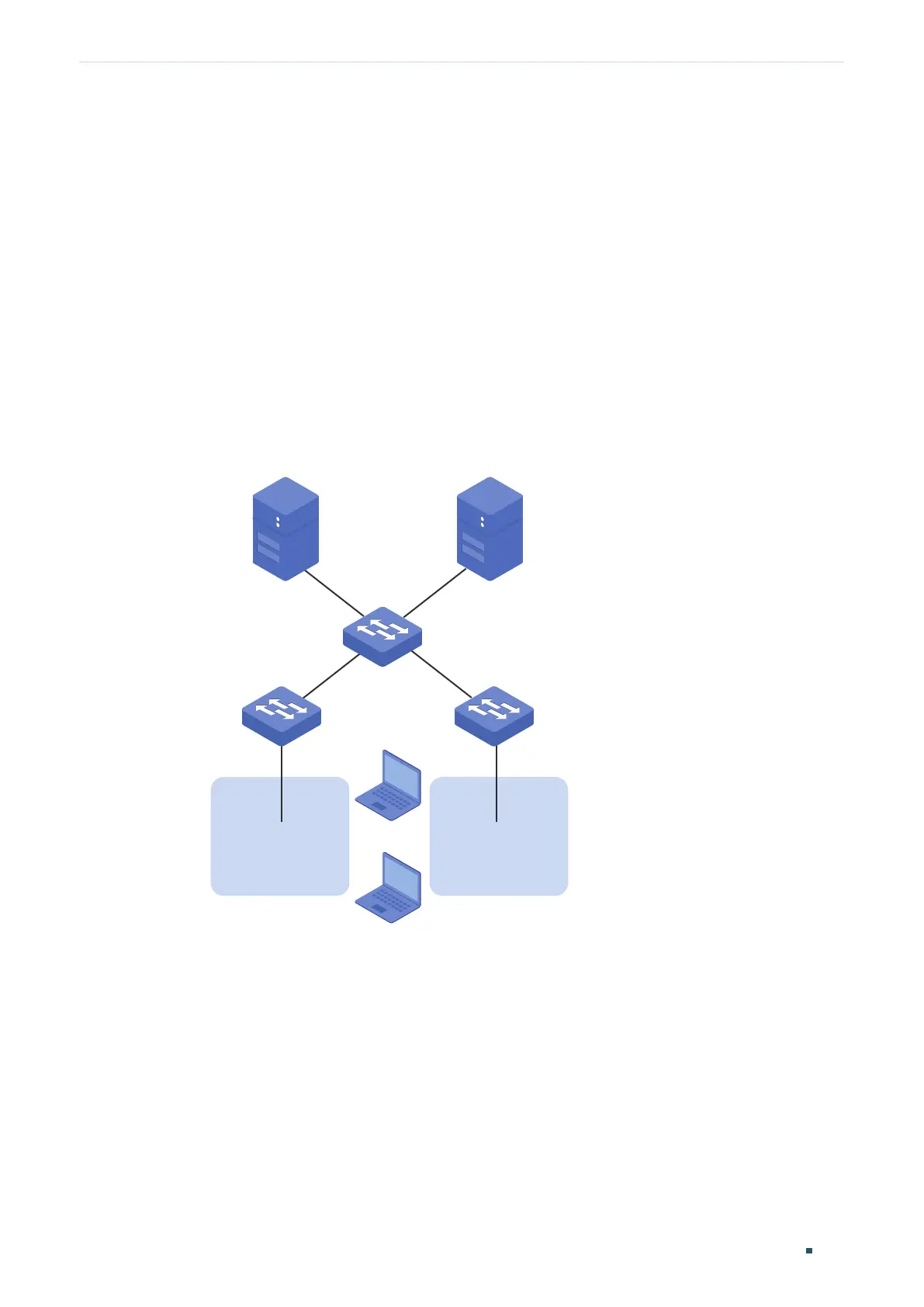User Guide 184
Configuring MAC VLAN Overview
1
Overview
VLAN is generally divided by ports. It is a common way of division but isn’t suitable for
those networks that require frequent topology changes. With the popularity of mobile
office, at different times a terminal device may access the network via different ports. For
example, a terminal device that accessed the switch via port 1 last time may change to
port 2 this time. If port 1 and port 2 belong to different VLANs, the user has to re-configure
the switch to access the original VLAN. Using MAC VLAN can free the user from such a
problem. It divides VLANs based on the MAC addresses of terminal devices. In this way,
terminal devices always belong to their MAC VLANs even when their access ports change.
The figure below shows a common application scenario of MAC VLAN.
Figure 1-1 Common Application Scenario of MAC VLAN
Meeting Room 1
Laptop A
Laptop B
Meeting Room 2
Switch 3
Switch 1 Switch 2
Server B
VLAN 20
Server A
VLAN 10
Two departments share all the meeting rooms in the company, but use different servers
and la
ptops. Department A uses Server A and Laptop A, while Department B uses Server
B and Laptop B. Server A is in VLAN 10 while Server B is in VLAN 20. It is required that
Laptop A can only access Server A and Laptop B can only access Server B, no matter which
meeting room the laptops are being used in. To meet this requirement, simply bind the MAC
addresses of the laptops to the corresponding VLANs respectively. In this way, the MAC
address determines the VLAN each laptop joins. Each laptop can access only the server in
the VLAN it joins.

